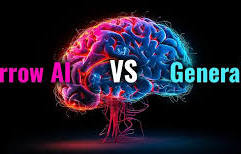The Rise of AI: Exploring Chat GPT
Artificial Intelligence (AI) has become an integral part of our daily lives, transforming the way we interact with technology. One of the most exciting developments in this field is the emergence of AI-driven conversational agents, with OpenAI’s Chat GPT leading the charge. This article delves into what Chat GPT is, how it works, and its impact on various sectors.
What is Chat GPT?
Chat GPT is a language model developed by OpenAI based on the Generative Pre-trained Transformer (GPT) architecture. It is designed to understand and generate human-like text based on the input it receives. By leveraging vast amounts of data and advanced machine learning techniques, Chat GPT can engage in conversations that are coherent and contextually relevant.
How Does It Work?
The underlying technology behind Chat GPT involves deep learning models trained on diverse datasets from the internet. These models learn patterns in language, enabling them to predict subsequent words in a sentence or generate responses to queries. The “pre-training” phase involves absorbing linguistic nuances from extensive textual data, while “fine-tuning” helps refine these skills for specific tasks or domains.
Applications Across Industries
The versatility of Chat GPT has led to its adoption across multiple industries:
- Customer Service: Businesses use AI chatbots powered by Chat GPT to handle customer inquiries efficiently, providing instant support and reducing wait times.
- Content Creation: Writers and marketers leverage AI to draft content ideas or even complete articles, enhancing productivity while maintaining quality.
- Education: Educators utilize AI-driven tools for personalized tutoring experiences, offering students tailored assistance based on their learning pace.
- Healthcare: In healthcare settings, AI chatbots assist patients by answering common questions about symptoms or providing information about medications.
The Ethical Considerations
The rise of powerful AI systems like Chat GPT also brings ethical considerations to the forefront. Issues such as data privacy, potential biases in training data, and the misuse of technology for spreading misinformation need careful attention. Developers and policymakers must work together to establish guidelines that ensure responsible use while maximizing benefits.
The Future of Conversational AI
The future looks promising for conversational AI as advancements continue at a rapid pace. Innovations in natural language processing will further enhance the capabilities of models like Chat GPT, making them even more adept at understanding context and generating nuanced responses. As these technologies evolve, they will undoubtedly play an increasingly significant role in shaping human-computer interactions.
In conclusion, Chat GPT represents a remarkable step forward in artificial intelligence development. Its wide-ranging applications demonstrate its potential to revolutionize industries by improving efficiency and accessibility. However, as with any powerful tool, it is crucial to approach its implementation thoughtfully and ethically.
6 Essential Tips for Optimizing AI Chatbot Performance and User Experience
- Provide clear prompts to get relevant responses.
- Regularly review and refine the chatbot’s responses for accuracy.
- Implement a fallback mechanism for handling out-of-scope queries.
- Ensure data privacy and security measures are in place for user interactions.
- Monitor user feedback to continuously improve the chatbot’s performance.
- Integrate human supervision when necessary to handle complex or sensitive inquiries.
Provide clear prompts to get relevant responses.
When interacting with AI models like Chat GPT, providing clear and specific prompts is essential to obtaining relevant and accurate responses. A well-defined prompt helps the AI understand the context and intent behind your query, allowing it to generate more precise and useful answers. Vague or ambiguous prompts can lead to responses that may not fully address the question or provide the desired information. By clearly stating what you want to know or discuss, you guide the AI in delivering content that aligns closely with your expectations, ultimately enhancing the overall efficiency and effectiveness of your interaction.
Regularly review and refine the chatbot’s responses for accuracy.
Regularly reviewing and refining the chatbot’s responses for accuracy is crucial in ensuring a seamless and effective user experience. By consistently evaluating the interactions and feedback received, developers can identify areas where the chatbot may be providing inaccurate or misleading information. This iterative process allows for continuous improvement, enabling the chatbot to deliver more precise and relevant responses over time. Ultimately, this commitment to refinement not only enhances the chatbot’s performance but also builds trust with users who rely on its assistance.
Implement a fallback mechanism for handling out-of-scope queries.
When deploying AI chat systems like Chat GPT, it’s essential to implement a fallback mechanism to manage out-of-scope queries effectively. While these AI models are highly advanced, they can occasionally encounter questions or topics that fall outside their training data or understanding. A fallback mechanism ensures that when such situations arise, the system can gracefully handle the query by either directing the user to a human agent, providing a generic response, or suggesting alternative resources for assistance. This approach not only enhances user experience by preventing frustration but also maintains trust in the AI system by ensuring users receive accurate and helpful guidance even when the AI reaches its limitations.
Ensure data privacy and security measures are in place for user interactions.
In the realm of AI-driven conversational agents like Chat GPT, ensuring data privacy and security is paramount. As users engage with these systems, they often share sensitive information that could be vulnerable to breaches if not properly protected. Implementing robust security measures, such as encryption and secure data storage protocols, helps safeguard user interactions from unauthorized access. Additionally, transparency about data usage policies and obtaining explicit consent from users can build trust and confidence in the technology. By prioritizing privacy and security, developers can ensure that AI chatbots not only provide valuable services but also respect the confidentiality of user data.
Monitor user feedback to continuously improve the chatbot’s performance.
Monitoring user feedback is crucial for continuously improving the performance of AI chatbots like Chat GPT. By actively gathering and analyzing user interactions, developers can identify patterns, understand common issues, and uncover areas where the chatbot may fall short. This feedback loop allows for targeted updates and refinements to the AI model, ensuring that responses become more accurate and contextually relevant over time. Additionally, user feedback helps in detecting potential biases or errors in the system, enabling developers to address these concerns proactively. Ultimately, by prioritizing user feedback, organizations can enhance the chatbot’s effectiveness and provide a more satisfying experience for users.
Integrate human supervision when necessary to handle complex or sensitive inquiries.
Integrating human supervision into AI systems like Chat GPT is crucial when dealing with complex or sensitive inquiries. While AI can efficiently handle a wide range of tasks, it may struggle with nuanced situations that require empathy, ethical judgment, or a deep understanding of context. By incorporating human oversight, organizations can ensure that responses to intricate questions are accurate and appropriate. This approach not only enhances the reliability of AI interactions but also builds trust with users by providing a safety net for scenarios where machine learning models might fall short. Ultimately, balancing AI capabilities with human insight leads to more effective and responsible deployment of technology in various applications.




